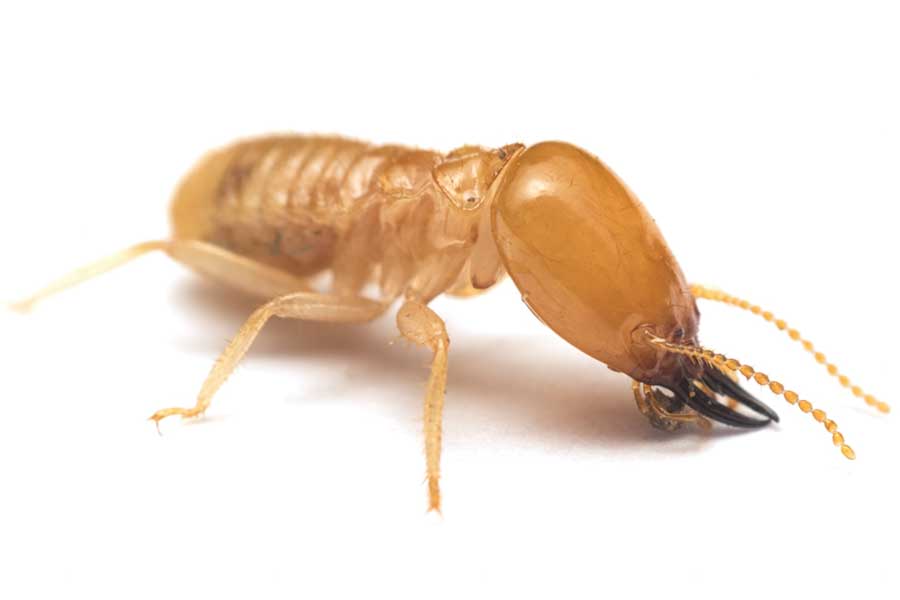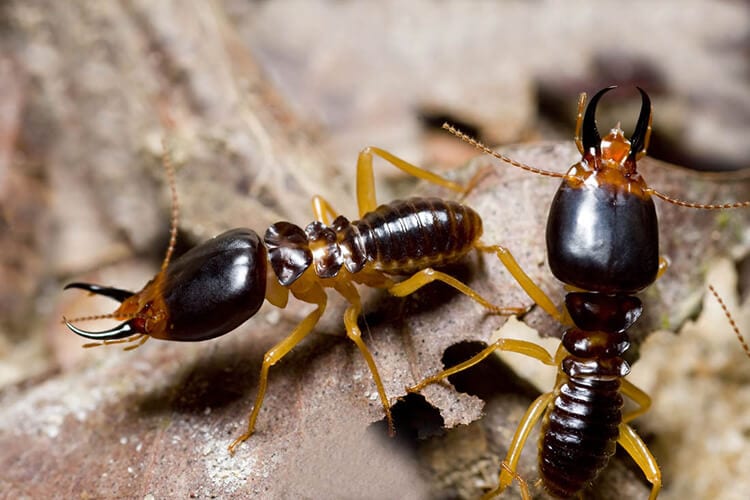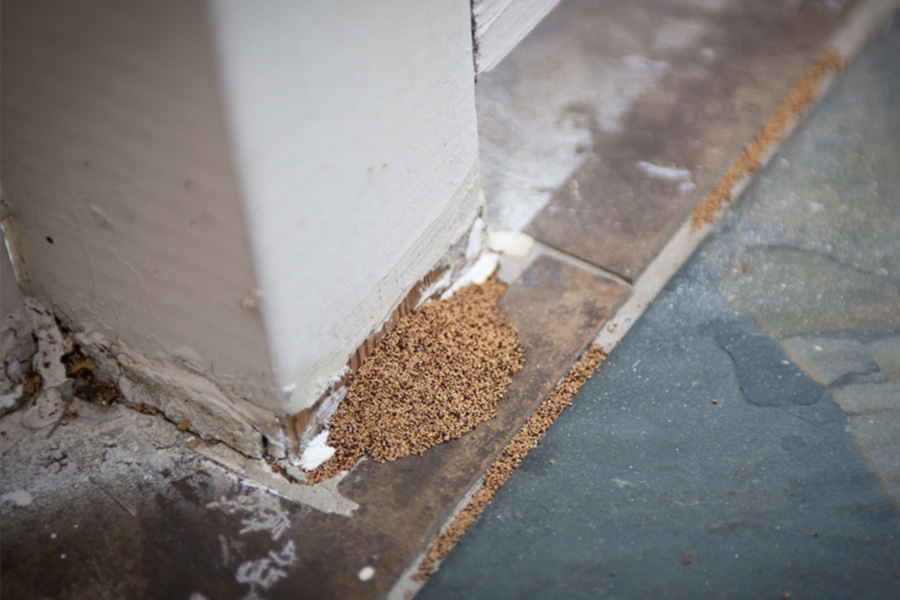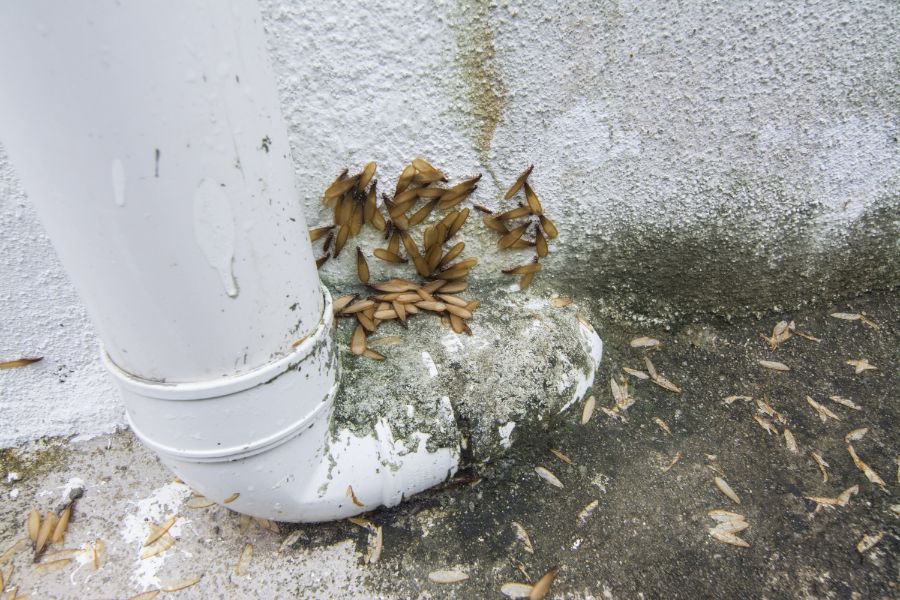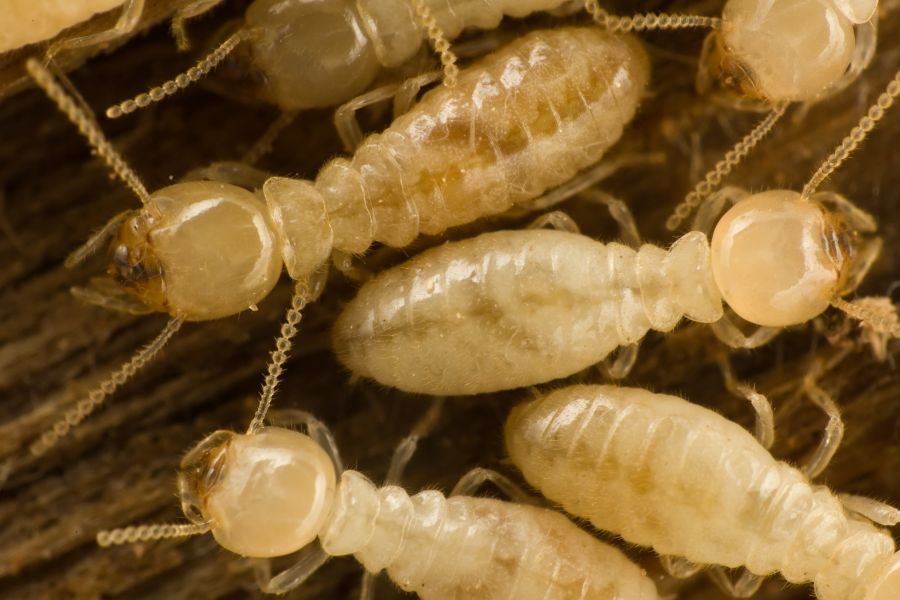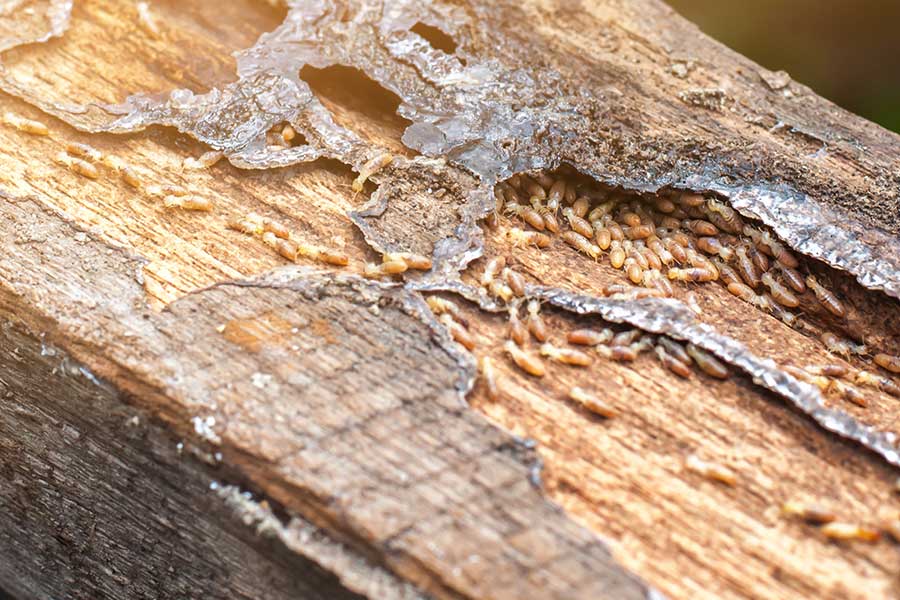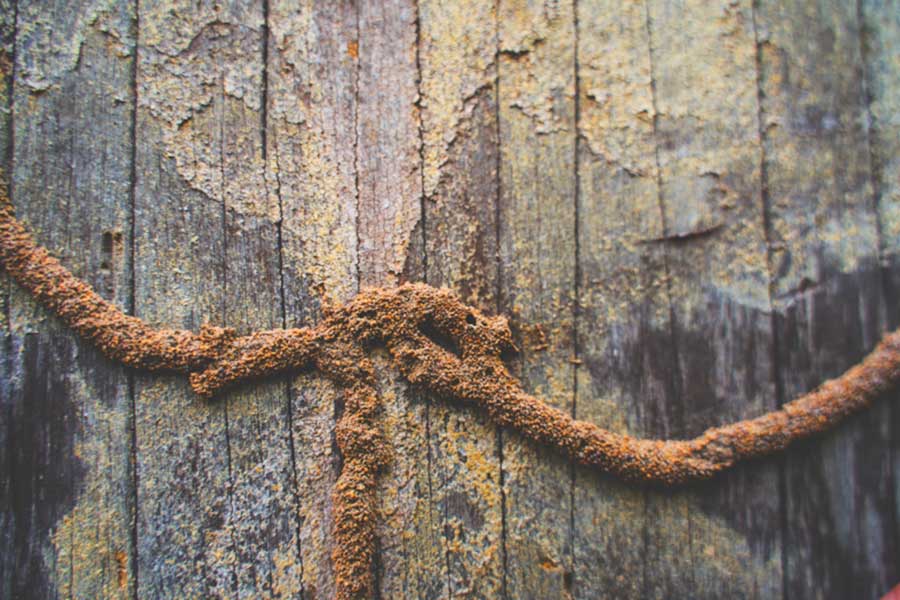Termite Identification
- How often should I get my home inspected for termites in Lubbock TX?
- How can I prevent termites naturally?
- How do you prevent termites when building a new home in Lubbock TX?
- What are the costs of termite prevention in Lubbock TX?
- Lawn & garden termite prevention
- How do you prevent termites from spreading in Lubbock TX?
Approximately the same size and shape as a large ant, worker termites are a lighter off-white color, while swarmer termites are dark brown and have wings. Queen termites (and king termites) can grow to about 1” long.
There are many different termite species in the world, but here in Lubbock TX it’s the subterranean and Formosan termites that do most of the damage. Read more about both varieties in this section.
Look for drooping wallpaper, bubbling paint, discoloration or warping on your walls. Or it could be termite mud tubes, piles of wings, or tiny holes in wooden surfaces. If you keep your eyes peeled, there are lots of ways to prevent a termite infestation by spotting it early.
Termites enjoy warm weather, so here in Lubbock TX we have a longer termite season than most places. February through May or June is when termites swarm, but once a colony is established inside, they’ll remain active all year.
Termites have a fascinating life cycle. After the queen lays the eggs, they hatch and molt several times before reaching adulthood. They’re then assigned one of a few different jobs based on what the colony needs: workers, soldiers, or reproductives.
Subterranean termites live underground except a few months of the year when they come above ground to swarm and establish new colonies. When they’re living in your house, they can stay hidden in the walls for months or years.
Termites spread in two main ways. Workers might discover a new food source (cellulose, found in wood) and summon additional termites. Or, between February and June, swarmers will go above ground, shed their wings, mate, and establish a new colony.
Termite Identification Serving Lubbock, Plainview, Levelland, Wolfforth
Lubbock County | Hale County | Hockley County | Crosby County | Garza County | Lynn County | Terry County | Lamb County | Floyd County
Lubbock | Plainview | Levelland | Wolfforth | Idalou | Slaton | Littlefield | Post | Tahoka | Brownfield | Floydada | Crosbyton
Home » Termite Learning Center » Termite Identification

